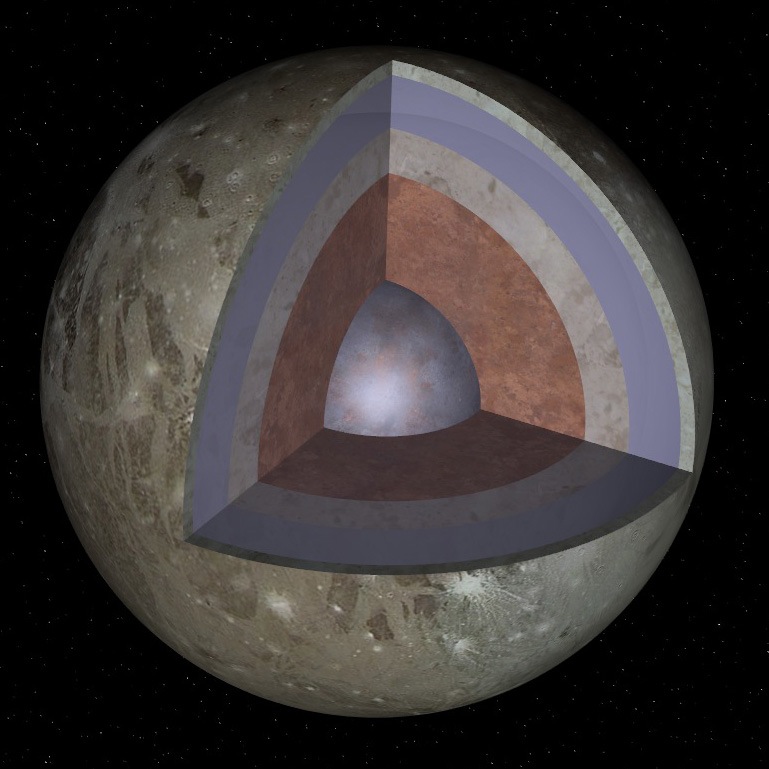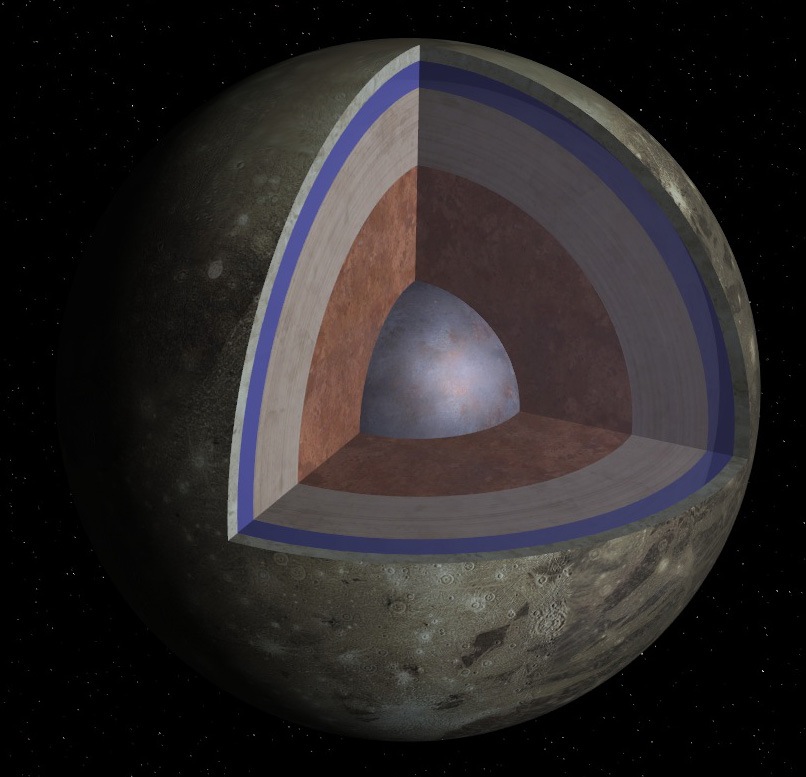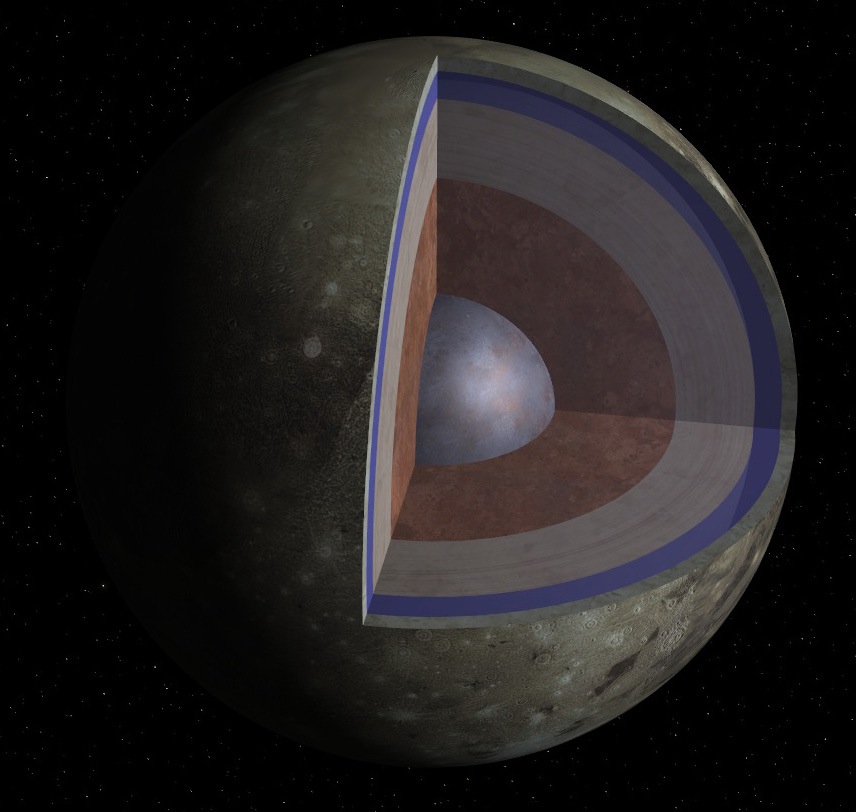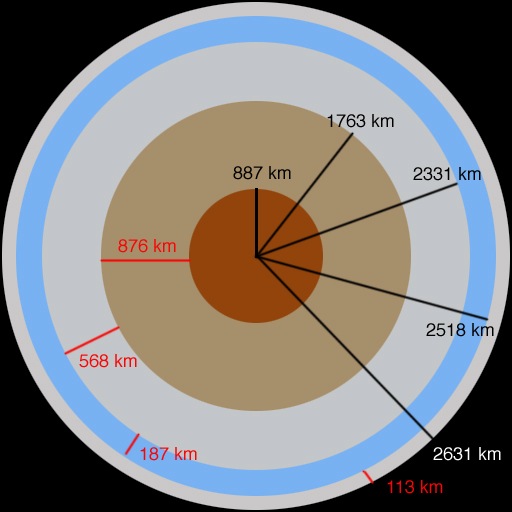Chaos,
thanks for your picture. I was also thinking about a model with layers of those proportions. However, there's something very puzzling here : the magnetic field generated by the moon. Apparently, AFAIK, Ganymede has a relatively pretty "strong" magnetic field which, according to some studies, should be generated by a "deep" ocean of salty water. I can't see how such a small layer of liquid water, as shown on your picture, could generate a significant magnetic field. Actually, the magnetic field is one of the first indices which pointed to a global internal ocean. The deep ocean can also help understanding the very large visible cracks and fractures on Ganymede's surface. Usually, the proportions you are showing may be more accurate for Callisto and/or Europa.
I'm really not a specialist on planetary dynamics, moons internal structure, etc, and all these matters are really interesting.
I need to talk to a professional specialist on galilean moons. If I can't find some satisfying "viable" or "plausible" proportions, I may abandon that moon model.

"Well! I've often seen a cat without a grin", thought Alice; "but a grin without a cat! It's the most curious thing I ever saw in all my life!"







